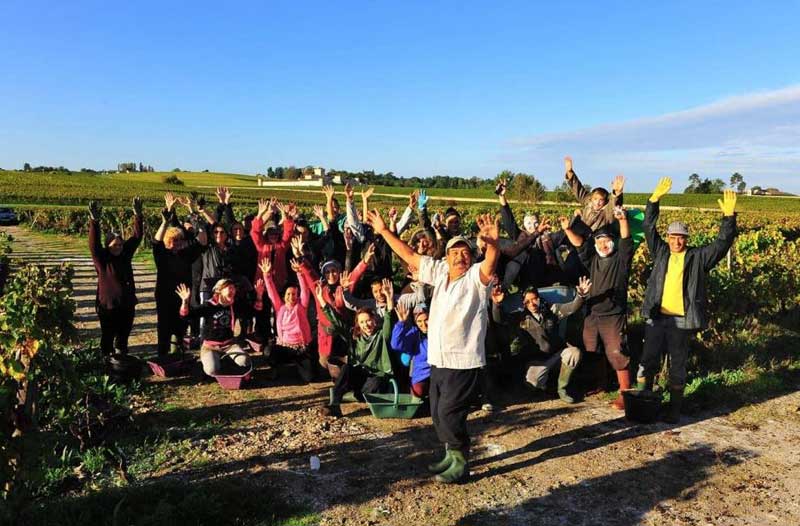Are you passionate about wine? Look no further! “The Wine Lover’s Guide to Bordeaux” is your ultimate companion for exploring the enchanting world of Bordeaux wines. Whether you are a novice seeking to expand your knowledge or a seasoned connoisseur looking for new discoveries, this comprehensive guide will take you on a captivating journey through the rich history, breathtaking vineyards, and incredible flavors of Bordeaux. From iconic Châteaux to hidden gems, this guide will unlock the secrets of this renowned wine region and ensure an unforgettable experience for every wine enthusiast. Cheers to your exploration of Bordeaux’s finest vintages!
The Wine Lover’s Guide to Bordeaux
Welcome to The Wine Lover’s Guide to Bordeaux! In this comprehensive article, we will explore everything you need to know about Bordeaux wines – from their rich history and appellations to understanding wine labels, wine classifications, best wine-producing regions, tasting and food pairings, visiting vineyards and wineries, collecting and investing in Bordeaux wines, discovering hidden gems, and sustainable practices in Bordeaux. Whether you are a seasoned wine enthusiast or a novice, this guide will take you on a journey through the world-renowned Bordeaux wine region.
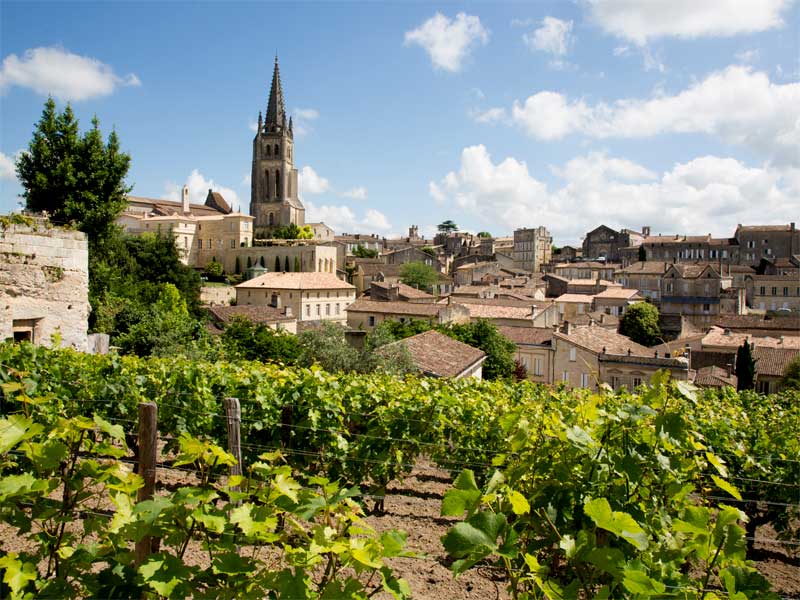
1. Introduction to Bordeaux wines
– Overview of Bordeaux wine region
Bordeaux, located in the southwestern part of France, is one of the world’s most prestigious wine regions. It is blessed with a maritime climate, diverse terroirs, and a long history of winemaking traditions. The region stretches along the Garonne and Dordogne rivers, creating a unique microclimate that allows for the production of exceptional wines.
– History of Bordeaux winemaking
Bordeaux has a winemaking history that dates back over two thousand years. The Romans were the first to cultivate vineyards in the region, establishing the foundations for today’s wine industry. Over the centuries, Bordeaux wines gained popularity across Europe and beyond, cementing their reputation for excellence.
– Importance of Bordeaux wines in the wine industry
Bordeaux wines play a crucial role in the global wine industry. They are renowned for their elegance, complexity, and age-worthiness. Bordeaux’s influence extends beyond its own borders, as its winemaking techniques and traditions have been adopted by wine producers worldwide. The region’s wines are highly sought after by collectors, connoisseurs, and enthusiasts, making Bordeaux a dominant force in the wine market.
2. Bordeaux wine appellations
– Classification of Bordeaux appellations
The Bordeaux wine region is divided into several appellations, each with its own set of regulations and unique characteristics. The highest classification is the Appellation d’Origine Contrôlée (AOC), which guarantees the origin and quality of the wines.
– Famous sub-regions within Bordeaux
Bordeaux is known for its famous sub-regions, each with its own distinct terroir and wine styles. The Left Bank, encompassing the Médoc and Graves regions, is renowned for producing Cabernet Sauvignon-based red wines. On the Right Bank, Saint-Émilion and Pomerol shine with their Merlot-driven blends. Other notable sub-regions include Pessac-Léognan, Sauternes, and Entre-Deux-Mers.
– Key grape varieties in Bordeaux
Bordeaux boasts a range of grape varieties, with each playing a significant role in producing distinctive wines. The red grape varieties include Cabernet Sauvignon, Merlot, Cabernet Franc, Petit Verdot, and Malbec. For white wines, Sauvignon Blanc, Sémillon, and Muscadelle are the primary grape varieties used.
3. Understanding Bordeaux wine labels
– Appellation d’Origine Contrôlée (AOC) system
The AOC system in Bordeaux ensures that the wines meet specific regulations regarding grape varieties, viticultural practices, and winemaking techniques. It guarantees the authenticity and quality of the wines, providing valuable information to consumers.
– Reading Bordeaux wine labels
Understanding Bordeaux wine labels can be daunting, but it becomes easier with a basic knowledge of the labeling conventions. The labels often include the appellation, estate or château name, vintage, and classification if applicable. Familiarizing yourself with the terminology and the hierarchy system will help you navigate the selections with confidence.
– Key information on Bordeaux labels
Bordeaux labels provide essential information about the wine, such as the appellation, estate, vintage, grape varieties, and sometimes even the specific vineyard plot. Understanding this information can give you insights into the wine’s style and quality, allowing you to make informed choices.
4. Bordeaux wine classifications
– Classification of 1855
The Bordeaux Wine Official Classification of 1855, also known as the Bordeaux Grands Crus Classés, is a historic and influential classification that ranks the top Médoc and Sauternes châteaux. The classification divided the wineries into five levels, or “growths,” based on reputation and quality.
– Additional Bordeaux classifications
In addition to the 1855 Classification, Bordeaux has introduced several other classifications. These include the Cru Bourgeois Classification, the Saint-Émilion Classification, and the Graves Classification, among others. These classifications recognize and distinguish the quality and pedigree of the wineries and their wines.
– The importance and influence of these classifications
Bordeaux’s wine classifications are of great importance as they provide a reference point for consumers and collectors seeking exceptional wines. The classifications act as a guarantee of quality and a symbol of prestige. They also serve as a guide for the price range and aging potential of the wines, making them highly influential within the industry.
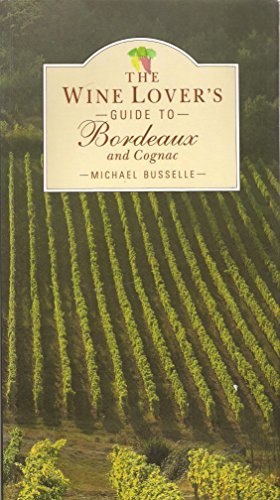
5. Best wine-producing regions in Bordeaux
– Médoc region
The Médoc region is home to some of Bordeaux’s most famous wineries, including Château Lafite Rothschild, Château Margaux, Château Latour, and Château Mouton Rothschild. It is known for its gravelly soil, which imparts structure and elegance to the Cabernet Sauvignon-dominant wines.
– Saint-Émilion
Saint-Émilion, situated on the Right Bank of the Dordogne River, is recognized for its Merlot-driven blends. Château Ausone, Château Cheval Blanc, and Château Angélus are among the prestigious estates in this region. The wines of Saint-Émilion are known for their richness, opulence, and velvety tannins.
– Pessac-Léognan
Pessac-Léognan, located in the Graves region, produces both red and white wines of exceptional quality. The red wines are predominantly Cabernet Sauvignon-based, while the white wines are a blend of Sauvignon Blanc and Sémillon. Château Haut-Brion and Château La Mission Haut-Brion are esteemed estates in this appellation.
– Graves region
The Graves region, known for its gravelly soil, gives birth to red and white Bordeaux wines of distinction. It is an appellation that combines elegance, structure, and aging potential. Château Haut-Bailly and Domaine de Chevalier are renowned producers in this area.
– Sauternes
Sauternes, famous for its lusciously sweet and botrytized wines, is located in the southern part of Bordeaux. Château d’Yquem, one of the world’s most celebrated wineries, produces exceptional Sauternes wines. The region’s unique climate and terroir contribute to the production of these coveted sweet wines.
6. Bordeaux wine tasting and food pairings
– How to taste Bordeaux wines
Tasting Bordeaux wines can be a delightful experience, provided you follow a few simple steps. Start by examining the wine’s appearance, noting its color and clarity. Then, move on to the aroma, identifying the different aromas and their intensity. Finally, savor the wine’s taste, paying attention to the flavors, acidity, tannins, and overall balance.
– Popular Bordeaux wine styles
Bordeaux offers a range of wine styles to suit various tastes. From the elegant and structured Cabernet Sauvignon-based reds of the Left Bank to the voluptuous and Merlot-driven blends of the Right Bank, there is a Bordeaux wine style for everyone. White Bordeaux wines, both dry and sweet, showcase crispness, minerality, and complexity.
– Pairing Bordeaux wines with food
Bordeaux wines are incredibly versatile and pair well with a variety of dishes. The red wines complement red meats, game, and cheese, while the white wines pair excellently with seafood, poultry, and creamy sauces. Sauternes wines are sublime when paired with foie gras, blue cheese, or fruity desserts. Experimenting with different combinations will unlock a world of flavors and enhance your dining experiences.
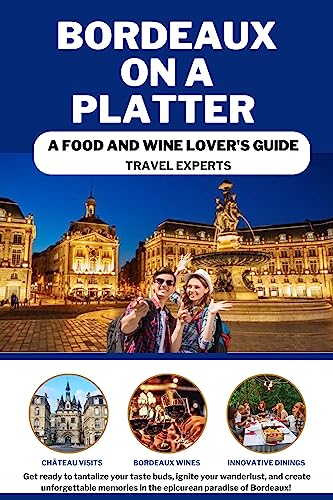
7. Visiting Bordeaux vineyards and wineries
– Planning a trip to Bordeaux
Planning a trip to Bordeaux is a wine lover’s dream come true. Start by selecting the best time of year to visit, typically during the grape harvest or the milder seasons of spring and fall. Research the different wine regions, vineyards, and wineries you wish to visit, and consider hiring a tour guide or joining organized wine tours to make the most of your experience.
– Recommended vineyard visits
Bordeaux is home to numerous esteemed vineyards and wineries, all offering a unique perspective on winemaking and a chance to taste exceptional wines. Some must-visit vineyards include Château Margaux, Château Haut-Brion, Château Lafite Rothschild, and Château d’Yquem. Explore the varied tours and tastings on offer and immerse yourself in the rich heritage of Bordeaux wines.
– Wine tours and tasting experiences
Joining a wine tour or tasting experience is an excellent way to gain insights into Bordeaux’s winemaking practices and discover hidden gems. Many wineries offer guided tours, where you can explore the vineyards, cellars, and production areas, followed by tastings of their exquisite wines. Whether you prefer a personalized tour or a group experience, Bordeaux has a wide range of options to suit every wine enthusiast.
8. Collecting and investing in Bordeaux wines
– Bordeaux wines as an investment
Bordeaux wines have long been recognized as an investment opportunity due to their ability to increase in value over time. The region’s reputation, limited supply, and high demand contribute to the potential for significant returns. However, investing in Bordeaux wines requires careful consideration, research, and understanding of market trends.
– Tips for building a Bordeaux wine collection
Building a Bordeaux wine collection can be a rewarding endeavor. Start by determining your budget, wine preferences, and collecting goals. Consider purchasing wines from different vintages, appellations, and classifications to showcase the diversity and aging potential of Bordeaux wines. Storing the wines in proper conditions will ensure their longevity and optimal enjoyment.
– Cellaring and aging Bordeaux wines
Bordeaux wines are known for their ability to age gracefully. To maximize their aging potential, store the bottles in a cool, dark, and humid cellar. Proper temperature and humidity control will allow the wines to develop complexity, soften their tannins, and reveal their full potential. Monitoring the wines over time and opening them when they reach their peak will reward you with an unforgettable tasting experience.
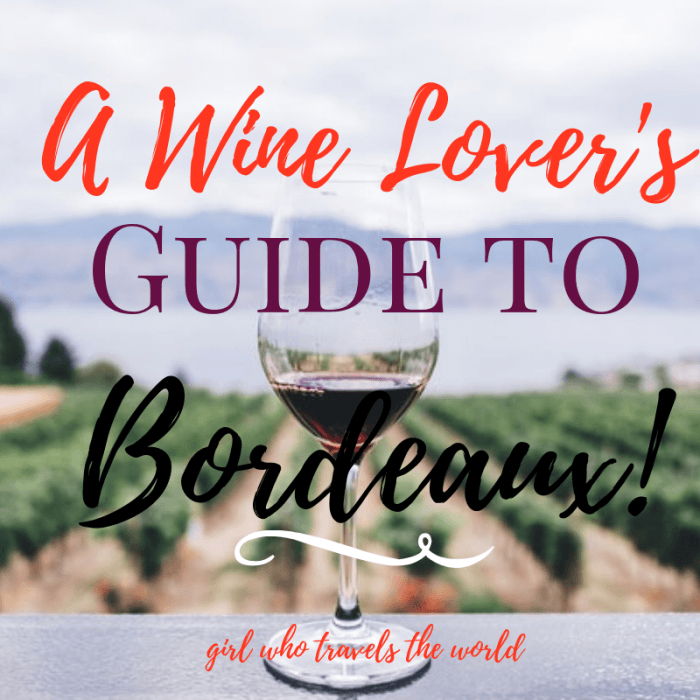
9. Hidden gems of Bordeaux
– Lesser-known Bordeaux appellations
While Bordeaux is famous for its renowned appellations, it also hides lesser-known gems waiting to be discovered. Appellations such as Côtes de Castillon, Fronsac, and Côtes de Blaye offer exceptional wines at more affordable prices, showcasing the diversity and quality beyond the traditional favorites.
– Unique grape varieties in Bordeaux
Bordeaux is not solely defined by its well-known grape varieties. The region also cultivates unique and lesser-used grape varieties that deserve attention. Malbec, Carmenère, and Petit Verdot are among the hidden gems that add depth and complexity to Bordeaux blends, offering a delightful twist to the classic Bordeaux styles.
– Off-the-beaten-path wineries
Venturing off the beaten path in Bordeaux can lead you to extraordinary wineries that are not as widely recognized. These hidden gems offer intimate and personalized experiences, allowing you to connect with passionate winemakers and taste exceptional wines with a sense of discovery. Exploring the lesser-known wineries is a chance to uncover hidden treasures and create lasting memories.
10. Sustainable and organic practices in Bordeaux
– Sustainable viticulture in Bordeaux
Sustainability is of utmost importance in Bordeaux, with many winemakers embracing environmentally friendly practices. From organic farming and biodiversity preservation to reduced chemical usage and water management, Bordeaux wineries strive to protect the land and create wines in harmony with nature. Sustainable viticulture ensures the longevity of the region’s vineyards and the continued production of high-quality wines.
– Organic and biodynamic wines in Bordeaux
Organic and biodynamic winemaking practices are gaining popularity in Bordeaux, as wineries seek to produce wines that are free from synthetic chemicals and promote natural balance in the vineyards. Organic wines rely on organic farming methods, while biodynamic wines take a holistic approach that incorporates lunar cycles and the use of herbal preparations. These wines offer a unique expression of Bordeaux’s terroir and a sustainable approach to winemaking.
– Certification programs in Bordeaux
To distinguish sustainable, organic, and biodynamic wines, Bordeaux has implemented certification programs that verify adherence to specific guidelines. These certifications, such as “Agriculture Biologique” and “Demeter,” offer assurance to consumers that the wines have been produced according to strict environmental and quality standards. Look for these certifications on the labels to support wineries committed to sustainable practices.
In conclusion, The Wine Lover’s Guide to Bordeaux serves as your comprehensive handbook to navigating the enchanting world of Bordeaux wines. From the region’s rich history and appellations to understanding wine labels, exploring classifications and hidden gems, and embarking on vineyard visits, this guide equips you with the knowledge and insights to appreciate Bordeaux’s exceptional wines fully. So, grab a glass of Bordeaux, embark on this journey, and immerse yourself in the timeless beauty and unparalleled flavors that this remarkable wine region has to offer. Cheers!
